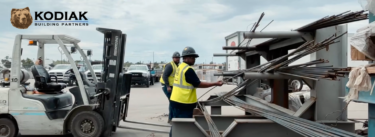Well, I’ve been implementing lean in various companies, mostly manufacturing, since the very beginning of 1982. So, you are right: I am getting old, technically. But I certainly don’t feel old. I think old is a state of mind. And certainly when it comes to lean I don’t feel old, or “old school”, as you so nicely put it, at all. The things that worked for me as Group Executive at The Danaher Corporation, as CEO of The Wiremold Company, and in the private equity companies where I was Chairman while being an Operating Partner with J. W. Childs Associates still work today and are very effective.
I was taught the Toyota Production System (the word lean didn’t come about till 10 years later, talk about old) by the Shingijutsu consultants more than 30 years ago. This was three guys (eventually four) who had spent their careers at Toyota, the last ten of which they worked directly for Taiichi Ohno, the father of TPS. They were tough on us. They called us concrete heads (I guess we were) and said our factories were the worst they had ever seen (probably correct). The first thing they said to us was, “Everything here is no good, what do you want to do about it?” We didn’t argue or push back on this. We just said, “So show us how to fix it” and made a determination that we would do whatever they told us no matter how stupid it might have sounded at first.
They showed us the approach they were using with the Toyota Group companies and Toyota’s first tier suppliers. It was all about kaizen, kaizen, kaizen. They showed us how to organize a kaizen. Why it was important to set stretch goals for the kaizens and most importantly how to run a kaizen. We learned how to pick the right kind of kaizen team and make sure there was a mix of hourly and salaried people on the team (extremely important by the way). They gave us the forms needed to run a proper kaizen, like standard work sheets, standard work combination sheets, time observation forms and the like. They showed us how to run a proper leader’s meeting every afternoon reviewing the progress of the teams (many of the team leaders were “fired” during these meetings (not literally)). Most importantly, they showed us how to see the massive amounts of waste that were sitting there staring us in the face that we could not see.
They were on the floor with us all day long. We made sure we had dinner with them every night to pump them for more information. We heard many great Taiichi Ohno stories and we learned at a very rapid pace. They never talked to us about strategy or how to run our business. It was all about waste. Find the waste and get rid of it. Even so, from the very beginning we saw this as the greatest strategic weapon we had ever seen. We were getting tremendous gains with every kaizen. We were freeing up space and cash through inventory reduction, lowering costs, improving quality, increasing capacity, and lowering our lead times. Just as importantly we were getting tremendous employee buy in as people saw the benefits in safety, ease of work, better working conditions and a great sense of teamwork. Most importantly these kaizen events were a major source of learning for the entire organization. With teams that were 50% hourly and 50% salaried this learning really took place across the board.
As we eliminated waste the time it took to do anything/everything plummeted. We could compete in the market on our speed. Faster response to customer needs allowed us to gain market share and grow. As a result we came to know lean as a time-based growth strategy. Not only did lean help us speed up what we did, but we had lower costs, better quality and lower capital needs.
All companies, whether lean or traditional, have roughly the same strategies for things like growth, new products, entering new markets or doing acquisitions. Because of kaizen, however, the lean company can execute these strategies faster and at a lower cost. Without removing the waste, using kaizen after kaizen, and building a learning environment none of this is possible.
So, when you say “kaizen is old school” I think you are seriously off track. I understand why focusing on tools like A3 might be popular and trendy, but companies that focus on tools have a hard time getting out of the tools stage of lean; and rarely become lean enterprises. They are taking the easy way out. They want to implement something “lean” in say operations without changing anything else. Their sales approach, accounting systems, IT systems and HR approach all stay the same: traditional batch. Taking this approach will feel comfortable to most traditional companies. They are used to doing improvements by forming teams of mostly (usually all) salaried people who are assigned a project and spend weeks/months coming up with a plan. Getting the plan approved and implemented then takes another few months. All without the input from the people doing the work.
Six Sigma is another popular approach for a lot of companies that sticks with this traditional approach to solving problems. You take a bunch of salaried people and spend months training them. At the end of this you give them pretty colored belts. Next you send them forth to apply their new skills and solve various problems. They may spend six months studying, coming up with a plan and implementing it. You will get improvements but because the focus is mostly on one step in a twenty step process you will sub-optimize, and see little impact on the bottom line.
Kaizen turns this traditional approach on its head. It is a “learn by doing” approach that gets its strength from the fact that all the participants, including senior management, are on the kaizen full time for however long it lasts (one week is pretty standard). It is not a planning exercise. It is doing exercise. The teams are given stretch targets and expected to complete them by the end of the week. Many times they wind up beating these goals. So, at the end of each kaizen you have big results that have been implemented. Not a plan. More importantly, another group of your people have had a great learning experience. They have worked as a team and been amazed at what they were able to do. As you run more and more kaizens in every part of the company you start to make real progress toward becoming a lean enterprise. Everything must change!
So to me the issue isn’t that kaizen is old school. The issue is that companies are drifting away from this Toyota approach in order to slide back into their traditional study group of salaried employees trying to solve problems. What we need is to get back to the traditional Toyota approach; kaizen, kaizen, kaizen. Heck, we more than quadrupled Wiremold’s size and increased its enterprise value by just under 2,500% over about 10 years before I ever even heard about A3. I’m sticking with “old school”. It’s the newer approaches that aren’t working.





